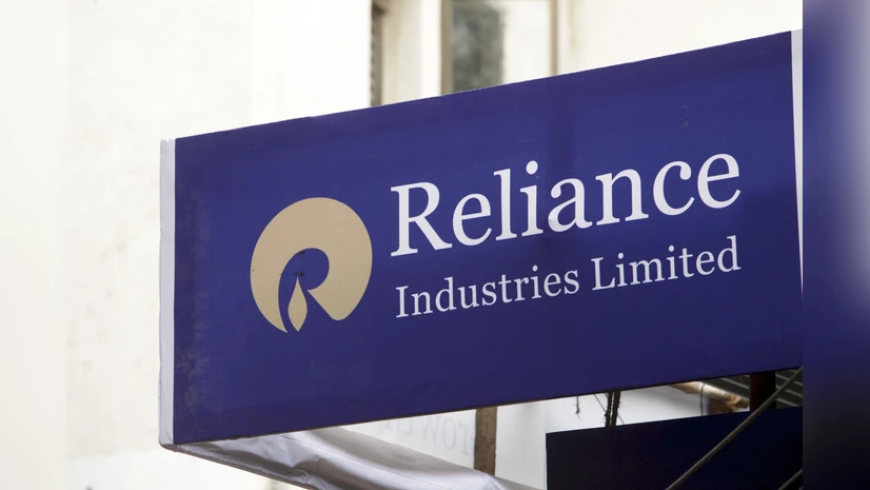Reliance Eyes Middle East Oil Again Amid Possible U.S. Sanction Pressures
Facing possible U.S. sanction pressures, Reliance Industries may shift back to Middle Eastern oil imports. Explore the strategic, economic, and geopolitical implications of this move.

In a development that could reshape India’s energy import strategy, Reliance Industries Ltd. — one of the country’s largest conglomerates — is reportedly considering a pivot back to crude oil imports from its traditional suppliers in the Middle East if tightening U.S. sanctions make its current sourcing from Russia economically or logistically difficult.
The move would mark a potential return to pre-2022 trade patterns, when Middle Eastern suppliers, particularly Saudi Arabia, Iraq, and the United Arab Emirates, were Reliance’s top crude partners. The shift comes as Washington intensifies efforts to curb Russian oil exports, with sanctions that could complicate payment systems, shipping insurance, and dollar-based transactions.
From Russian Discounts to Middle Eastern Stability
When the Russia-Ukraine war broke out in February 2022, global energy flows were thrown into turmoil. Russia, facing Western sanctions, began offering its crude — particularly the Urals blend — at steep discounts to attract buyers in Asia. India emerged as one of the largest beneficiaries, increasing Russian imports to record highs.
Reliance Industries, which operates the world’s largest refining complex in Jamnagar, Gujarat, capitalized on these discounts. The company processed Russian oil into fuels such as diesel and aviation turbine fuel, often re-exporting them to global markets.
However, geopolitical conditions are shifting. The U.S. Treasury Department has signaled stricter enforcement of sanctions, warning buyers and intermediaries about compliance risks. New penalties could target not just direct purchases but also the maritime and financial infrastructure enabling Russian crude flows.
Energy analysts say that if the U.S. tightens the noose, Reliance may find it both safer and more cost-effective to restore its heavy reliance on Middle Eastern grades, which have fewer political risks and more predictable logistics.
Why the Middle East Still Matters to Reliance
The Middle East has long been India’s energy backbone, with proximity, established shipping routes, and deep political ties making it a reliable supplier.
-
Proximity advantage: Middle Eastern ports are significantly closer to Indian refineries than Russia’s Baltic and Arctic loading points, reducing transit times and freight costs.
-
Consistent quality: Grades from Saudi Arabia, Kuwait, and Iraq are well-suited for Reliance’s refining units, which have been optimized over decades to handle these crudes.
-
Strategic security: Imports from politically aligned Gulf nations face far fewer compliance hurdles than Russian shipments, which must often navigate complex sanction-evasion structures.
According to data from India’s Ministry of Commerce, Middle Eastern suppliers still accounted for over 50% of India’s total crude imports in 2024, even with Russia’s market surge.
Possible Impact on Global Oil Prices
A sudden shift by Reliance back to the Middle East could have a ripple effect on global oil dynamics.
If Indian refiners collectively reduce purchases of Russian crude, it could force Russia to seek other buyers, likely deepening discounts to attract them. Meanwhile, greater demand for Middle Eastern grades could push up Brent crude benchmarks, especially if OPEC maintains its output discipline.
The International Energy Agency (IEA) recently noted that Asian refiners, particularly in India and China, are key to sustaining Russia’s export revenues. Any substantial withdrawal by India could alter market balances quickly.
Reliance’s Business Calculus
Reliance has built its oil sourcing strategy on price arbitrage — buying crude where it’s cheapest, refining it efficiently, and selling high-value products globally. The Russian discounts have been highly profitable. But the risk calculus is changing:
-
Sanction risk: The U.S. could impose secondary sanctions, cutting off Reliance’s access to dollar financing and international insurance.
-
Shipping insurance: Vessels carrying Russian oil may lose access to Western insurers, raising transport risks and costs.
-
Reputational factors: Continued reliance on Russian crude could draw political criticism, particularly from Western trade partners.
Industry insiders suggest Reliance is preparing contingency plans to quickly ramp up Middle Eastern imports should sanctions bite harder.
Government’s Balancing Act
India’s government has so far defended its energy policy as being driven by “national interest” and the need for affordable energy. Petroleum Minister Hardeep Singh Puri has repeatedly stated that India will buy from “wherever it gets the best deal.”
However, with U.S.-India relations deepening, New Delhi may prefer not to risk a diplomatic flashpoint over oil sourcing. Analysts believe that while smaller refiners may continue taking advantage of Russian discounts as long as possible, Reliance — given its global footprint and exposure to Western markets — may pivot faster.
Refinery Adjustments and Supply Contracts
Switching back to Middle Eastern oil would not be technically challenging for Reliance. The Jamnagar complex was designed to process a wide range of crude grades, with decades of operational experience on Gulf oil.
However, pricing will be the key. Middle Eastern suppliers may be reluctant to match the deep discounts Russia has been offering. Negotiations would likely center around long-term contracts, possibly with Saudi Aramco or Iraq’s State Oil Marketing Organization (SOMO), to secure stable volumes at competitive rates.
Some market watchers point to the fact that Reliance had previously signed a strategic agreement with Saudi Aramco for equity investment in its oil-to-chemicals business — a deal that has been on hold but could be revived if both sides see mutual benefit.
Impact on Indian Consumers
For the Indian consumer, a shift back to Middle Eastern oil may not bring immediate relief in fuel prices. While supply stability would improve, Middle Eastern grades tend to be more expensive than Russian crude under sanctions. This could narrow Reliance’s refining margins, potentially leading to slightly higher domestic fuel prices if global benchmarks rise.
On the flip side, reduced risk of supply disruption could help stabilize fuel availability, an important factor for India’s growing economy.
Market Signals to Watch
Oil market observers will be closely tracking several indicators in the coming months:
-
Changes in India’s crude import mix, especially from April–June shipping schedules.
-
Freight rates for Middle East–India tanker routes.
-
Pricing trends for Oman crude, Basrah Light, and Arab Light grades.
-
Official statements from the U.S. Treasury or State Department about sanction enforcement.
Conclusion: A Return to Familiar Shores?
Reliance Industries’ potential pivot back to Middle Eastern oil is not just a story about corporate strategy — it’s a reflection of how geopolitics, economics, and energy security intersect in today’s world.
While the allure of Russian discounts has been strong, the cost of navigating sanctions may soon outweigh the benefits. For Reliance, turning to its long-standing partners in the Middle East may provide a safer, more predictable foundation for its refining empire.
As the U.S. steps up pressure on Moscow’s oil revenues, India’s biggest private refiner could once again become a key player in strengthening Gulf–South Asia energy ties, reshaping trade flows for years to come.











